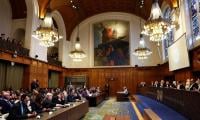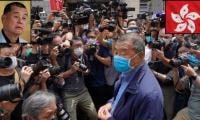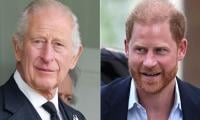Why we need a free press
On May 3 (today), World Press Freedom Day (WPFD) is observed internationally. It was first proclaimed by the UN General Assembly in December 1993; so it has been over 25 years that journalists and writers around the world celebrate the fundamental principles of press freedom.
Evaluating press freedom around the world has become a regular exercise for both academics and journalists, who try to defend the media from attacks on their independence. Tributes are also paid to journalists who have lost their lives in the exercise of their profession. This year, the overall theme of the event is the role of media in elections and democracy.
With recent elections in countries such as India, Indonesia, and Spain, one can appreciate the relevance of this theme. Indonesia and Spain have suffered under long dictatorships of General Suharto and General Franco respectively, whereas India has seen press curbs during the mid-1970s under the Emergency Rule imposed by the then prime minister, Indira Gandhi. Interestingly, these three countries give us an appropriate platform to compare and contrast the levels of press freedoms in relation to the development of democracy in these countries. We may also draw some parallels that help us understand the situation in Pakistan.
Strangely, Indonesia and Spain represented two entirely different geographical locations and historical contexts but shared some most remarkable features of suppression. Both suffered long and suffocating curbs on the press. The duration of the dictatorships was almost the same – spanning over three decades. In Spain, the press was crushed from the mid-1930s to the mid-1970s; and in Indonesia press freedom was almost non-existent from the mid-1960s to the mid-1990s. Both countries eradicated all left-wing and progressive activists, journalists, intellectuals, and writers. Both dictatorships used propaganda to hide their extreme brutalities which resulted in hundreds of thousands of deaths.
When all other Western European countries had established democracies and were enjoying a very high level of press freedom, Spain was still reeling under one of the most brutal and longest lasting tyrannies in the world. Indonesian military and army-supported goons killed at least a million people but did not allow any press coverage of the massacres being wreaked across Indonesia. Those who want to go through a visual journey of these events may watch three excellent films on Indonesia: 'The Year of Living Dangerously' (1982) directed by Peter Weir, 'The Act of Killing' (2012) and 'The Look of Silence' (2014) both directed by Joshua Oppenheimer.
India was different, as it had seen almost three decades of democratic rule – at least in terms of adult franchise, general elections, and fairly independent journalism and judiciary. The imposition of emergency rule was an extreme measure that resulted in denting democracy, curbing civil liberties, harming the judiciary, and subverting press freedoms. It set a precedent for the BJP to use almost the same tactics to cow down the press in covert and overt ways. So what are the lessons that we may draw from these three seemingly different examples that do have some common features?
First, the curbing of the press is always a bad omen for democracy. General Franco crushed the freedom of the press and expression, much in the same fashion as Hitler had done some years earlier in the Germany of the mid-1930s. He incarcerated, killed, maimed, and tortured an entire generation of journalists and intellectuals. General Suharto in Indonesia did almost the same and inflicted a ruthless regime on the people after curbing the press. People were disenfranchised, disempowered, and divested of their say in economic, political and social matters.
India followed a different path, but the use of ‘national integrity and security’ as an excuse was the same. So the second lesson is: whenever an establishment wants to enjoy unlimited power it creates a bogey of national security issues that may harm the country. While doing so, it becomes important for the state not to allow any dissenting voices that can present a different picture. It is also imperative for an authoritarian, dictatorial, totalitarian, or tyrannical regime – be it civilian or military – to use an overactive propaganda machinery to drown out any sensible voices in society, by calling them traitors and terming them anti-state.
If we apply that to Pakistan, we see that right from the inception of the country – even during the time of Jinnah and Liaquat – dissenting voices were curbed and curtailed. Those who want to read and understand the power dynamics of press curbs must read books written by Ahfaz Ur Rahman, Prof Tauseef Ahmad Khan, and Zamir Niazi, who have painstakingly documented the details of the struggles of journalists during various periods of Pakistan history. This brings us to the third lesson, and that is: no matter how brutal a regime is or how strict the censorship is, the struggle for the freedom of the press must continue.
Another common feature in countries such as India, Indonesia, Pakistan, or Spain is the elimination of an independent judiciary under an authoritarian dispensation. An independent judiciary ensure press freedom, and forces the state to blunt its weapons against the press. The regime is not always a military dictatorship; it can assume multiple garbs and guises to curb press freedom. It can be open and shameless military dictatorship of generals such as Franco, Suharto, Ayub, or Zia. It can also emerge under civilian leaders such as Indira Gandhi, Sheikh Mujib, or Z A Bhutto.
So the fourth lesson is: never be fooled by the appearances of rulers and always try to figure out where the real power lies. A US Supreme Court Judge, Justice Hugo Black, once famously remarked, “the press is to serve the governed, not the governors”. Freedom of the press is critical to a democracy so that the government and the state can be held accountable to the people. Here the government and the state are not always the same. In a democracy, the government is elected by the people, whereas the sate mostly consists of the selected bureaucracy – both civil and military.
If the democracy is weak, state institutions encroach upon government functions. A free media functions as a watchdog that can investigate and report on government and state wrongdoings. In dictatorships or weak democracies, state institutions become the prime wrongdoers and are the ones that mostly curb press freedoms. Sometimes civilian and elected leaders also try to use state institutions to fulfil their own power agenda; in that case, both the government and the state become complicit against the freedom of the press.
In countries such as Pakistan, civilian governments are deliberately kept so dependent on state institutions that they cannot allow press freedom even if they want to. Most dominant states are afraid of vibrant ideas because they become a vehicle for ordinary citizens to express themselves. That’s why the noose around the press is kept tight so that the people cannot gain exposure to a wide range of information and opinions. The rise of the national security state results in the decline of press freedoms, which is why some states keep their citizens in a perpetual security conundrum that a ‘press in chains’ cannot untangle.
A never-ending surveillance mechanism is used to keep a tab on all media. Interestingly, the same mechanism is not applied to religious and sectarian outfits and their media enthusiasts who are more responsible for security threats than any journalist or intellectual. The press says ‘no, sorry, there are constitutions and laws, rules and regulations that govern even love and war’. You cannot abduct someone and administer a forced marriage in the name of love; similarly, you can’t justify an abduction in the name of war. That’s why we need a free press.
The writer holds a PhD from the University of Birmingham, UK and works in Islamabad.
Email: mnazir1964@yahoo.co.uk
-
 Golden Globe 2026: Expert Defends Amanda Seyfried's 'mean' Reaction
Golden Globe 2026: Expert Defends Amanda Seyfried's 'mean' Reaction -
 Why Taylor Swift Docuseries, Travis Kelce Podcast Not Nominated For A Golden Globe 2026
Why Taylor Swift Docuseries, Travis Kelce Podcast Not Nominated For A Golden Globe 2026 -
 UN Court Opens Myanmar Rohingya Genocide Case: A Pivotal Test For International Justice?
UN Court Opens Myanmar Rohingya Genocide Case: A Pivotal Test For International Justice? -
 Sean Penn's Reaction Goes Viral After Brutal Nikki Glaser Roast
Sean Penn's Reaction Goes Viral After Brutal Nikki Glaser Roast -
 Royal Expert Reveals Two Major Reasons Behind Meghan Markle 'regal Return' To Britain
Royal Expert Reveals Two Major Reasons Behind Meghan Markle 'regal Return' To Britain -
 'Disgraced' Andrew’s Misconduct With Staff Exposed In Explosive Royal Biography
'Disgraced' Andrew’s Misconduct With Staff Exposed In Explosive Royal Biography -
 Hong Kong Court Begins Mitigation Hearing For Jimmy Lai Before Sentencing
Hong Kong Court Begins Mitigation Hearing For Jimmy Lai Before Sentencing -
 Prince Harry Puts King Charles In 'difficult Situation'
Prince Harry Puts King Charles In 'difficult Situation' -
 Are Your Daily Nasal Decongestant Sprays Safe? Find Out What Experts Say
Are Your Daily Nasal Decongestant Sprays Safe? Find Out What Experts Say -
 Why Depression Is More Than 'just In Your Head'
Why Depression Is More Than 'just In Your Head' -
 First Autistic Barbie Debuts As Mattel Broadens Inclusive Play
First Autistic Barbie Debuts As Mattel Broadens Inclusive Play -
 Kensington Palace Shares Major Update About Kate Middleton After Meghan Markle Plans
Kensington Palace Shares Major Update About Kate Middleton After Meghan Markle Plans -
 Kate Middleton Stepping Back Into Spotlight With Carefully Planned Schedule
Kate Middleton Stepping Back Into Spotlight With Carefully Planned Schedule -
 AI Boom Set To Lift TSMC’s Q4 Profit By 27%
AI Boom Set To Lift TSMC’s Q4 Profit By 27% -
 Golden Globes 2026: Fire Breaks Out Backstage While Celebrities Accept Awards
Golden Globes 2026: Fire Breaks Out Backstage While Celebrities Accept Awards -
 Study Finds Your Morning Coffee Could Help With Type 2 Diabetes
Study Finds Your Morning Coffee Could Help With Type 2 Diabetes



